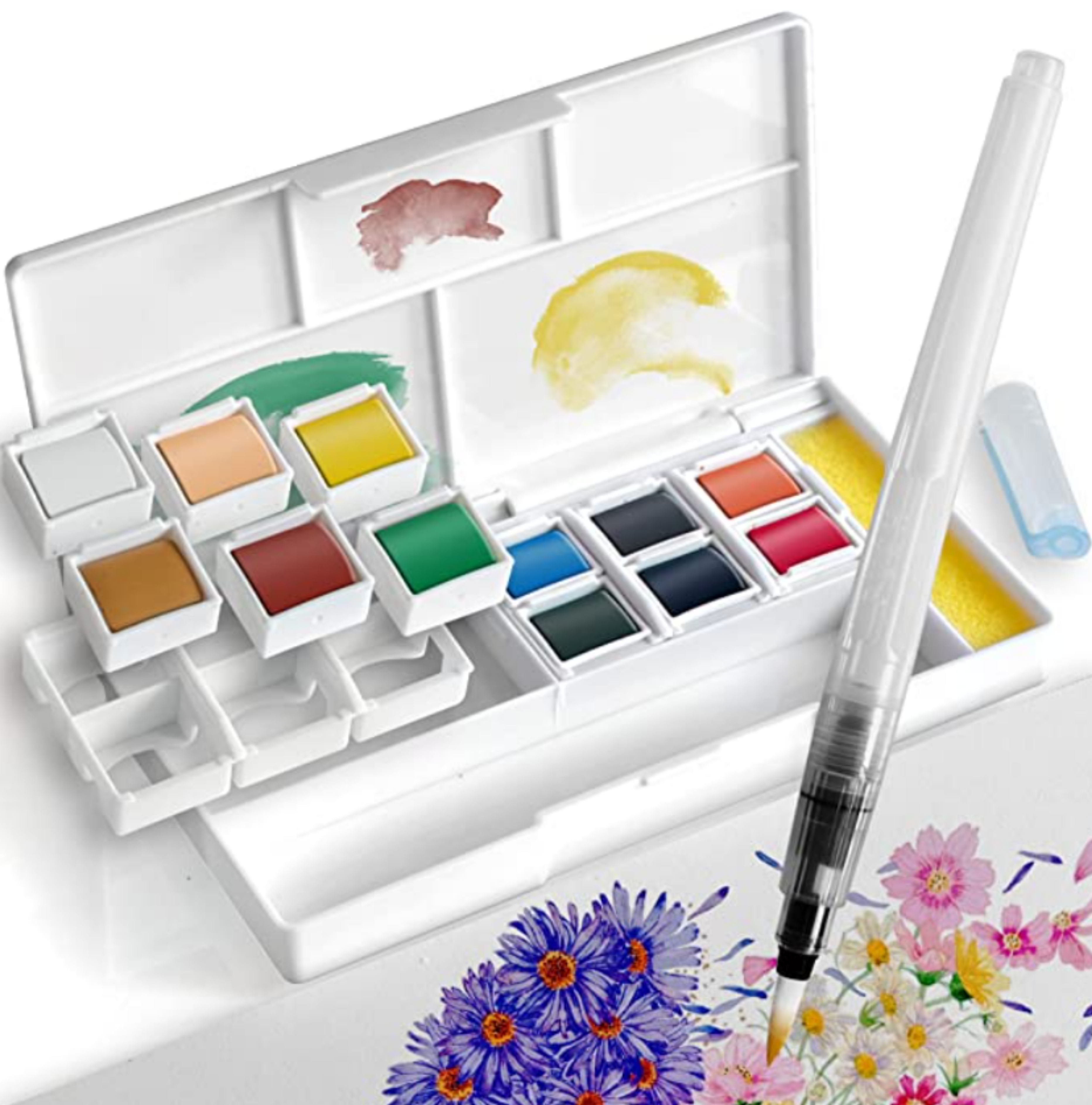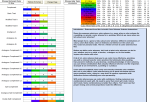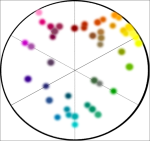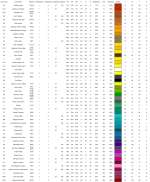WatercolorWiz3.xls

Description
WatercolorWiz3 provides a comprehensive set of tools for the watercolor artist. It's primary use is to preview how two pigments will interact with each other when mixed. There's also a database of reflectance curves, a tutorial on color schemes, and a properties database of the most common watercolor paints.
Calculation Reference
Color Science
The theory of mixing colors for watercolor painting is rooted in the understanding of color theory and the behavior of pigments when mixed with water. Mixing colors in watercolor is different from other mediums like oil or acrylic because watercolors are transparent, and the white of the paper plays a significant role in the final appearance of the colors.
Here is an overview of the theory of mixing colors for watercolor painting:
-
Color theory basics: Understand the color wheel, which consists of primary colors (red, blue, and yellow), secondary colors (green, orange, and violet, formed by mixing primary colors), and tertiary colors (formed by mixing a primary color with a neighboring secondary color). Familiarize yourself with terms like hue (the pure color), value (the lightness or darkness of a color), and saturation (the intensity or purity of a color).
-
Transparency and opacity: Watercolor pigments have varying degrees of transparency and opacity. Transparent colors allow light to pass through them and reflect off the white paper, creating luminous effects. Opaque colors, on the other hand, reflect light from their surface and can appear flat or dull when layered. Understanding the transparency and opacity of your pigments is crucial for successful color mixing and layering in watercolor.
-
Mixing colors: When mixing watercolors, start with a limited palette of primary colors (a warm and cool version of each primary color is recommended) and experiment with mixing to create secondary and tertiary colors. Use a palette with wells to keep your mixed colors organized, and test your mixes on scrap paper before applying them to your painting.
-
Color temperature: Colors can be warm or cool, which affects how they interact when mixed. Warm colors (reds, oranges, and yellows) appear to advance, while cool colors (blues, greens, and violets) recede, creating a sense of depth in a painting. Mixing warm and cool colors can result in neutral or muted tones, which can be useful for creating natural, harmonious color schemes.
-
Glazing and layering: In watercolor, you can achieve a wide range of colors and values by layering and glazing. Glazing involves applying thin, transparent layers of paint over one another, allowing each layer to dry before applying the next. This technique creates depth and luminosity, as the light passes through the layers and reflects off the white paper. When layering colors, keep in mind that transparent pigments work best for glazing, while opaque pigments can create muddy or dull colors when layered.
-
Avoiding muddy colors: Muddy colors can result from over-mixing pigments or layering too many colors without allowing them to dry. To prevent muddy colors, mix colors gently and avoid overworking the paint. When layering, allow each layer to dry before applying the next, and use transparent pigments to maintain luminosity.
By understanding the theory of mixing colors for watercolor painting, you can create a wide range of hues, values, and saturation levels to bring your artwork to life. Experiment with different pigments, mixing techniques, and layering to find the combinations that work best for your artistic style and vision.
Calculation Preview
Full download access to any calculation is available to users with a paid or awarded subscription (XLC Pro).
Subscriptions are free to contributors to the site, alternatively they can be purchased.
Click here for information on subscriptions.








